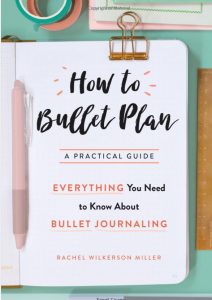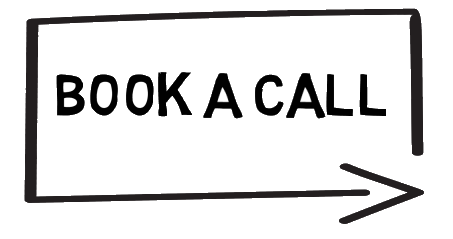Getting creative with a journal – I love stationery. I have loads of notebooks. And coloured pens, and stencils and stickers.
When I saw this book I knew I needed it in my life.
So, what is a Bullet Journal?
It’s a planner, to-do list and diary that will help you get your life together!
It’s a simple system to use one notebook for everything.
The best part, all you need is pens, a notebook and a little creativity. The perfect excuse to shop at Paperchase!
A Book Review
This is a clearly written, easy to follow and all-round lovely looking book. With enviable journal page images and ideas for page layouts.
In Bullet Journal world, page layouts are ‘spreads’.
The book features handy templates for monthly spreads, weekly spreads, daily spreads, habit tracking spreads and a whole host of other ideas to get your creative juices flowing.
Putting it into practice
‘Bullet Journaling’ is something I’ve been curious about for a while. I even started a Pinterest board for journal page ideas. My mind was blown when I realised how much of ‘a thing’ it was!
Starting a Pinterest board, however, then reading a book are two very different things.
Pinterest boards are all about intention and ideas, buying a book is an investment, it’s the first step into taking action!
Why Journal?
- Track daily habits
- Monitor To Do and Done lists
- Keep notes in one place
- Getting creative with page layouts
- One book for everything
- The catharsis of expressing yourself without fear of judgement
You can be as free as you like in your own personal journal.
Record and track as much or as little as you like.
I kept a diary as a teen, and some people use their journal for this, but for me, I don’t record things every day. My journal is my daybook – I use it track my To Do’s, my Done List, make notes from meetings and events, and to capture ideas throughout the day. It’s useful to monitor progress, track habits and business and personal goals.
I track daily water intake and 5-a-day:
![]()
Tracking progress forces you to spend time every day reflecting on what you’ve achieved and what you want to do the next day. It feels like a much more mindful approach which in itself is satisfying.
How To Rock Your Journaling
My current journal has dotted pages.
It’s the first time I’ve tried dot pages. The idea is you can use the faint dots to line things up neatly. Up to now, I have favoured a plain paged notebook.
My Journalling Lightbulb Moment
I had three lightbulb moments from reading this book:
1) A code for bullet points
2) Page numbering
3) An index section
A Code – sounds complex, but it’s actually really simple and an easy way to keep track of progress. It means you can make a bullet point as complete, in progress, cancelled or migrated and at a glance see what needs to be done and what you’ve already achieved.
Page Numbering – It seems obvious now, but rarely do we number pages in our notes books. It means we are going back and forth through old notes trying to find information.
Index Section – With page numbers and an index you can quickly go back to what you need. It means you can keep everything in the same book, working through it as it happens, then flick back to those pages of meeting notes, or blog ideas or To-Do lists…
The One Notebook Method
By numbering and indexing, you can keep everything in one place. Rather than packing a bag for the day, trying to plan ahead and decide which books you’ll need, you just pack one book in your handbag.
The method allows you to do everything in one place, however, I still keep separate notebooks for business planning and fiction writing, only because I can fill up a single notebook very quickly!
I use my one book as a daybook, which means when I’m out and about on holiday or out with clients I can do anything I need to in one book and quickly look up notes at a later date. If that information then needs to be transferred to a digital forgat – i.e. blog drafts or client notes – I use the microphone on my phone to ‘talk-to-text’ in an email to myself by reading out the notes. By emailing it to myself, it reminds me to do something with it. I tried capturing notes in Google Docs, but would then forget about them. By sending an email, it pops up in my inbox.
There is something creative about the visible, visceral, experience of physically writing down information. I can enjoy the experience of physically writing and being able to work from anywhere without needing an internet connection. Anything to get us away from our screens and getting creative with our words!


